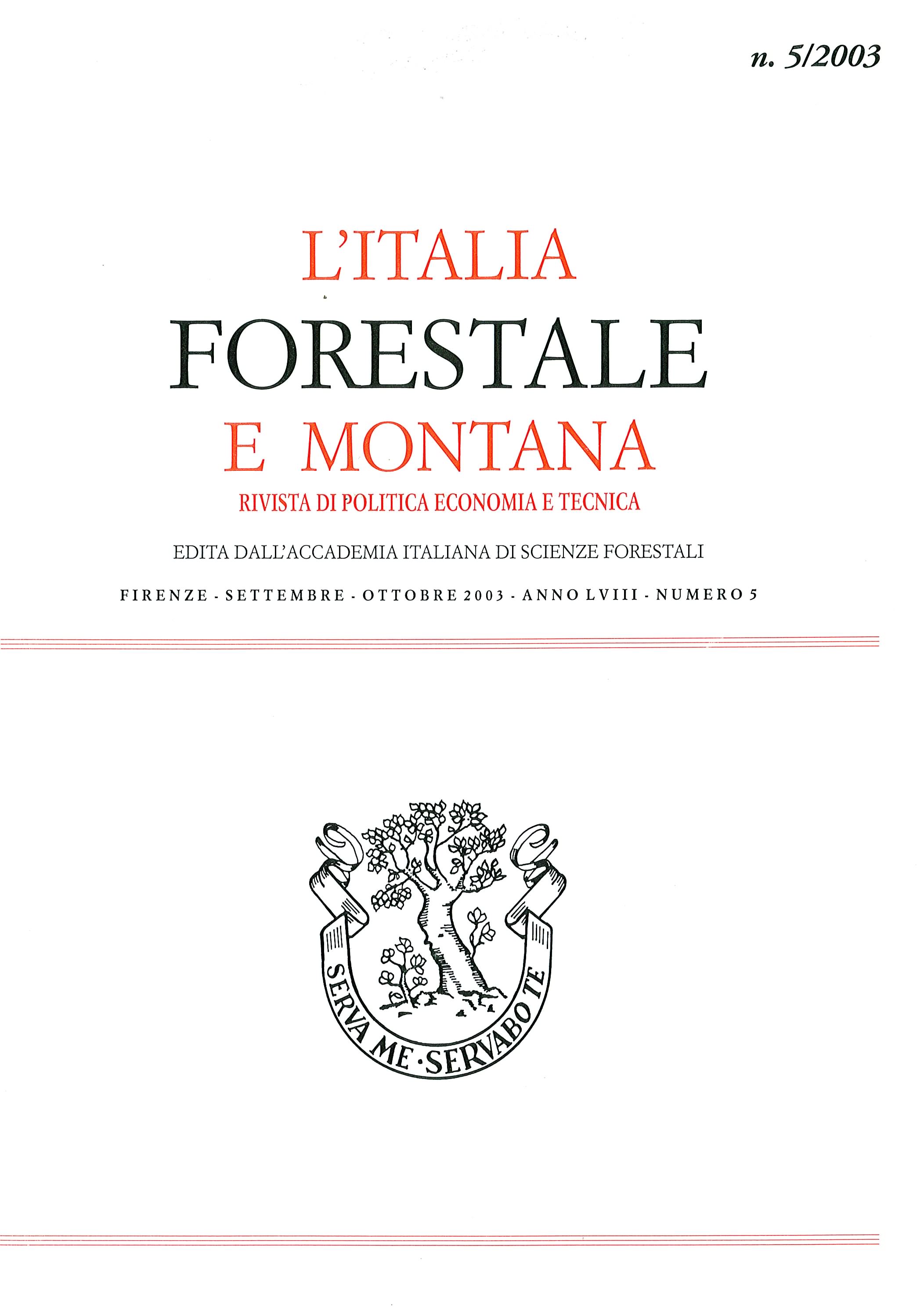Reforestation effects in dry areas of Sardinia. Climatic classification of experimental sites
Published 2003-10-31
Keywords
- Reforestation,
- Climatic classification,
- dry areas,
- Sardinia
Copyright (c) 2013 Italian Journal of Forest and Mountain Environments

This work is licensed under a Creative Commons Attribution-NonCommercial 4.0 International License.
Abstract
A detailed climatic analysis of weather data has been performed for 17 meteorological stations in Sardinia; this information has been extrapolated in order to estimate the climatic features of three experimental sites in which investigations about the effectiveness of conifer plantation in controlling desertification processes, compared to the natural vegetation, were carried out. For the average weather year, all the stations fall into the mediterranean bioclimate (oceanic pluviseasonal) of the Rivas-Martinez classification, with a rate between precipitation and potential evapotraspiration which is almost always over the threshold of subhumidity. From the observation of the meteorological data set it is possible to conclude that, starting from the early Sixties, the mean yearly temperature shows a trend towards an increase of about half a degree centigrade per decade; this is associated with a reduction of some 8 mm per year of the total rainfall. All the indexes adopted to test the occurrence of water stresses provide substantially similar information and clearly separate the mountain locations from the two ones closest to the sea. In the analyzed time period, the climatic indexes show a great variation among years, with the occurrence of years particularly crucial for vegetation development. Climatic conditions of the three sample sites, estimated trough regression models, seem to be quite homogeneous and such as to be related to the warm belt of Castanetum with summer drought and, considering soil conditions, to the humid types of Thornthwaite classification.

